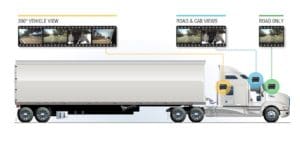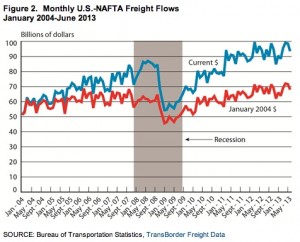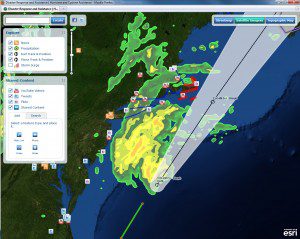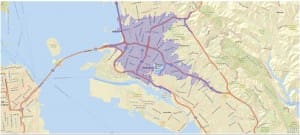Fleet telematics has a robust return on investment. Multitenant platforms can be an elegant way to collect Big Data. Big Data, used right, has great power. Put them all together and what do you get? An interesting logistics technology.
The Geotab Telematics Platform
Telematics solutions provide truck fleets with the ability to remotely monitor the location, status, health, and activity of vehicles. Geotab is the telematics company that gathers Big Data for analysis in their fleet management platform. Over 40,000 customers use Geotab’s tracking device -a tiny two by three-inch device that connects any kind of vehicle to the Internet, making it a ‘connected’ vehicle. The device has GPS, so it allows a truck’s position and movement to be tracked. The device also connects to many of the engine computers and can detect things like whether an engine light is on, fuel consumption, wiper activation, engine RPM, harsh braking, even the ambient air temperature. The Canada-based company’s software application, MyGeotab, is what enables fleet managers to gain insights from all that raw data.

Geotab has over 1.8 million GPS tracking devices in operation, tracking over 83 million daily miles. This means that the company processes over 30 billion data points daily. So, Big Data!
The platform is what allows Geotab to productively analyze that data. The company uses Google Cloud to host the data. Google BigQuery is used to analyze and make sense of the data. Geotab also leverages TensorFlow, an open source machine learning framework that Google developed, to apply machine learning models to the raw data in order to deliver context-specific benchmarks for customers. The company can classify about 30 different vehicle driving patterns. They can understand the differences between how someone drives a van for a pest control company versus how someone drives a truck for an oil company. This helps their fleet customers make more informed operational decisions.
In an article, Mike Branch, Vice President of Data and Analytics for Geotab, said that “without Google BigQuery and TensorFlow, we wouldn’t have the ability to benchmark data for customers like this at scale, which is a key differentiator for us.”
Telematics Platform and Benchmarking
Geotab’s CEO, Neil Cawse, told me that “we can tell clients things like ‘relative to fleets in your space, you are operating more safely.’” The benchmarking can even be region specific. “In our idling analysis, we can say for this type of truck, this is the average amount of idling time I can expect in my region.” Idling is wasted gas and contributes to global warming. Idling, of course, is more common when it is hot or cold outside and is sometimes reasonable; Some regions are hotter or colder than others.
The system can help fleets operate more safely and efficiently. Neil Cawse, told me that they can tell fleet managers things like which trucks are more fuel efficient, which transmissions fail more often, and which drivers have the most hard-braking or speeding incidents. “The system can even tell a manager, ‘if you replace your aging trucks with new trucks, your fleet will be 15% more fuel efficient.’”
There are hundreds of rules that can be built. To turn a rule on – like the driver left their lights – just click on a button. Alerts can be brought to the attention of managers or drivers. “We offer an add on, an IOX speaker. You can tell a driver not to do something live as it happens.” Mr. Cawse said. “For example, if the driver is speeding by more than 10 miles per hour, our system speaks to him.” It is better to coach drivers to do something in real time than to scold them after the fact for something they did wrong.
It is also possible to configure distinctive rules that don’t come off the shelf. “There is something we think of as the ‘UPS rule,’” Mr. Cawse said. UPS has discovered that drivers are less likely to have fender benders if they always back up into parking rather than parking forward. A single rule can enforce this practice.
Telematics Can Provide Predictive Maintenance
For companies with large fleets, they can provide specific operational intelligence at the customer’s request. For some large customers, 60% of their maintenance issues stem from the electrical system. The battery is a major component of the electrical system. Geotab is using sensor data to figure out if, and when, the battery will fail.
“How do you figure out if battery will fail? A large fleet provided us their data that showed every time a battery change was needed. We learned what battery voltage curves are supposed to look like when the engine starts. We used machine learning to tag good and bad batteries. It was not that successful; we could only predict battery failures 80% of the time.” But then when oil temperature was added to the data, “we got to 98% in predictability.” Mr. Cawse explained it this way, “when you think about a cold Minnesota winter, when you crank the engine to get the truck going, that is a heavy load on the battery.” But once the truck has been driven for a couple hours, the engine warms up and the truck starts easily. Adding oil temperature allowed the machine learning to understand that and reduced the false positives significantly.
The possible savings for fleets are significant. “Some large fleets are changing the battery every three months whether it is bad or not – because unreliable vehicles can’t be allowed. Now they leave the batteries in and we tell them when to replace it.”
Automotive companies also use the data. For example Geotab is gathering information on behalf of Eaton Transmission, a supplier of transmission systems for heavy duty vehicles, to allow Eaton to better understand the performance of their automated manual transmissions. The next phase will be to allow trucks to be reprogrammed over the air. If a truck travels to the Rockies, the way the gear shifting pattern can be altered to reflect the terrain. “Right now, trucks use a vanilla average for changing patterns for transmissions. By dynamically changing the way transmissions operate, trucks can get better fuel efficiency.”
Telematics Big Data Has Smart City Implications
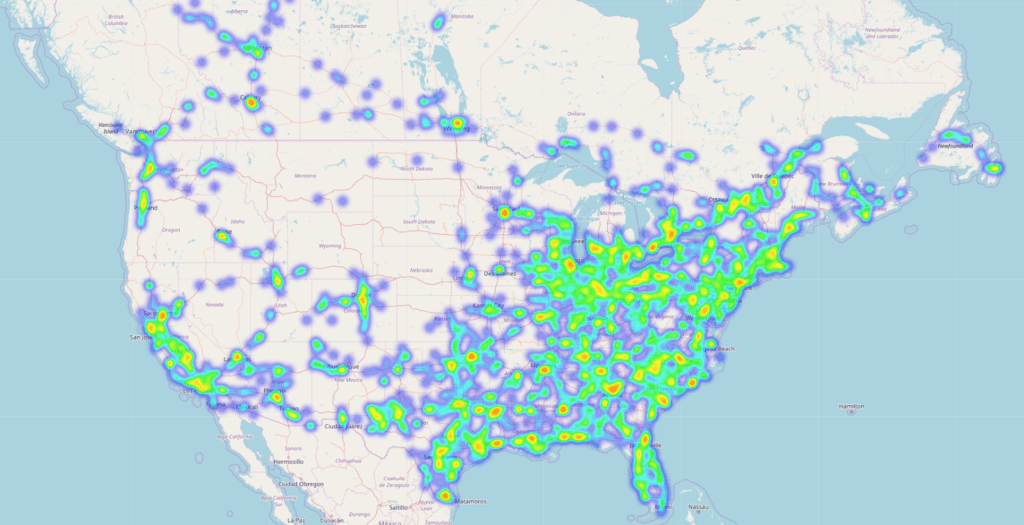
Some of the most exciting discoveries from the Geotab data sets may come from Smart City initiatives. The data from all these fleets driving in cities can be used to make cities safer. “Around 4% of vehicles in a year have an accident. 1 in 220 accidents causes a fatality.” The data sets can be used to look for dangerous intersections. “Two intersections five miles apart may look the same. But one intersection is 20 times more likely to have accidents. Towns can use this data to put up traffic lights.”
Or you can send people out to see if they can figure out why an intersection is so dangerous. It could be as simple as an overgrown tree obscuring visibility. It could be more complex. There was a block in Chicago that was safe when the weather was good, but became dangerous as soon as it started to rain. Why was this? This block contained a school. In good weather, children went to the intersection and safely crossed to where their parents were waiting to pick them up. But in the rain, they ran across the street.
Cities and states can also use the data for infrastructure planning and to improve traffic flow. Traffic flow rates by time of day and day of week can be monitored. “The city of Las Vegas used this data to improve the timing of light changes. Throughput improved by 12%.”
There is also a pilot in Detroit to optimize the way large trucks move through the city. When trucks stop at lights, traffic is impacted. When the light changes green, they are slow and inefficient to get going. This impacts traffic flows, increases fuel consumption, and adversely impacts air quality. The idea is to see if having trucks signal smart traffic lights that they are coming so the trucks get green lights. In theory, this will not only improve life for truck drivers, but for everyone.
Big Data, properly harnessed, can provide valuable insights. The Geotab story illustrates this.
















